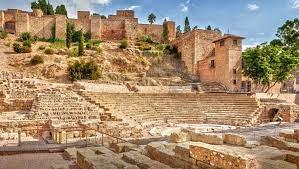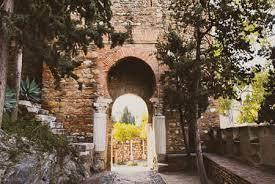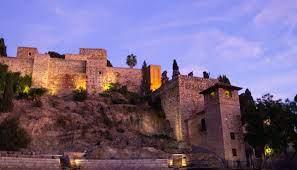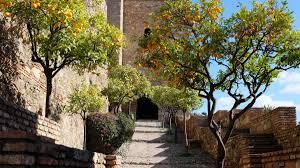



The Alcazaba
The Alcazaba of Malaga is a fortress palace from the Muslim period whose name in Arabic means citadel, a very popular place for combining history and beauty in the same enclosure. Classified as one of the most important monuments in the city, a visit to the Alcazaba is a must.
![]() Centro histórico
Centro histórico
![]() Calle Alcazabilla, 2 29012 Málaga, 29012
Calle Alcazabilla, 2 29012 Málaga, 29012
- PRICES:
Normal admission: 3,50€.
Reduced (students, pensioners, disabled, children...): 1,50€.
Combined Alcazaba + Gibralfaro Castle: 5,50€.
Free on Sundays from 14:00h until closing.
- OPENING HOURS:
SUMMER OPENING HOURS (1st April - 31st October)
From 09:00h to 20:00h (Last show at 19:30h).
Sundays free from 14:00h until closing time.
WINTER OPENING HOURS (1 November - 31 March)
From 09:00h to 18:00h (Last show at 17:30h).
Sundays free from 14:00h until closing time.
Attention: The Alcazaba and Gibralfaro will be closed 30 minutes before closing time and 15 minutes before closing time the palaces will be closed. It will therefore be impossible to visit the whole monument in less than half an hour. It will take approximately one hour to visit the whole complex.
There is a lift service for those who do not wish to walk up the stairs.
From the Muslim period, it is located at the foot of Mount Gibralfaro, where the Arab defensive castle is located, to which it was linked by a corridor protected by walls called La Coracha; next to the Roman Theatre and opposite the Customs building, it is an opportunity to see in just a few metres the union of the Roman, Arab and Renaissance cultures, which makes this corner a very special place.
Built between 1057 and 1063, according to Muslim historians, at the behest of the Berber Taifa king of Granada, Badis.
Later the Almoravids arrived in Malaga in 1092 and the Almohads in 1146. In 1279 it was conquered by Muhammad II Ben al-Ahmar and passed to the Nasrid kingdom. Its reformation gave it a deep imprint as a Nasrid building built on the rock. It combines the needs of defence with the beauty of a Moorish palace organised around rectangular courtyards and corridors with gardens and ponds. Its rooms, which, in the tradition of Granada architecture, seek the alternation of light and shadow in the interiors to achieve the interplay of light and shadow so well mastered by Arab master builders.
Its military component makes it one of the most important Muslim works preserved in Spain. With machicolations, watchtowers with arrow slits and crenellated walls as defensive elements, its best defence, however, was in its location, dominating the city and the bay from its balconies.
Around it there was a neighbourhood, now completely disappeared, which even had its own system for evacuating sewage, and latrines in almost all the houses, which proves the high level of civilisation that existed at that time.
It has undergone successive reconstructions, some as late as the 20th century, and can now be visited with important archaeological exhibits on display. In the first excavations for its restoration, remains of Roman concrete walls covered with reddish stucco and small pools dug in slate, used for the preparation of Garum (fish paste made by the Romans) and a dungeon where the Christian captives who worked during the day were locked up during the night.